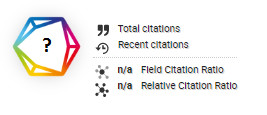Coconut Shell Charcoal Briquettes Processing Process Using Two Modified Combustion Types
DOI:
https://doi.org/10.46984/sebatik.v28i2.2523Keywords:
Charcoal Briquttes; Coconut Shell, Pyrolysis, Modified Combustion FurnaceAbstract
The process of producing briquettes from coconut shells is a promising alternative for waste utilization, creating products with high economic value for small industries. Coconut shell briquettes have a relatively high calorific value and are environmentally friendly. However, the production process, particularly in making charcoal and briquettes, still requires more efficient techniques and technology. The type of furnace used significantly affects the characteristics of the charcoal briquettes produced. The results of the study indicate that both combustion methods have a significant impact on the quality of the charcoal briquettes. The open furnace made of iron material required less time compared to the closed furnace combustion method. However, the closed furnace method is safer as it prevents direct contact with fire during combustion. In the combustion tests conducted three times using a closed furnace made of drum or zinc material, the charcoal yield was approximately 20%. A combustion test using 20 kg of coconut shell material produced 7.5 kg more charcoal with the closed furnace compared to the open furnace made of iron plate material. Additionally, the smoke produced from the closed furnace was minimal but steady throughout the combustion process. When compared to the quality requirements outlined in SNI 01-6235-2000, the results showed that five parameters met the standard requirements: moisture content, ash content, volatile matter content, fixed carbon content, and calorific value. Based on these findings, it can be concluded that both combustion methods have their respective advantages. The selection of the appropriate method can be tailored to production needs and environmental considerations.
References
agussalim, A., Khairana, A., Rajab, M., Rezky, M., & Dwiyanti, U. (2022). Mutu Dan Karakteristik Penyalaan Briket Arang Tempurung Kelapa Dengan Aplikasi Lapisan Arang Sengon Pada Permukaannya. Jurnal Rekayasa Proses, 16(1), 49. Https://Doi.Org/10.22146/Jrekpros.70277
Arman, M., Makhsud, A., Aladin, A., Mustafiah, M., & Abdul Majid, R. (2017). Produksi Bahan Bakar Alternatif Briket Dari Hasil Pirolisis Batubara Dan Limbah Biomassa Tongkol Jagung. Journal Of Chemical Process Engineering, 2(2), 16. Https://Doi.Org/10.33536/Jcpe.V2i2.161
Ashar, M., Sahara, S., & Hernawati, H. (2020). Pengaruh Komposisi Dan Ukuran Partikel Terhadap Kualitas Briket Kulit Durian Dan Tempurung Kelapa. Jft : Jurnal Fisika Dan Terapannya, 7(1), 33. Https://Doi.Org/10.24252/Jft.V7i1.13964
Iskandar, N., Nugroho, S., & Feliyana, M. F. (2019). Uji Kualitas Produk Briket Arang Tempurung Kelapa Berdasarkan Standar Mutu Sni. Jurnal Ilmiah Momentum, 15(2). Https://Doi.Org/10.36499/Jim.V15i2.3073
Makaruku, M. H., Tanasale, V. L., & Goo, N. (2022). Pemanfaatan Limbah Tempurung Kelapa Menjadi Briket Arang Sebagai Bahan Bakar Alternatif Di Desa Kamarian Kecamatan Kairatu Kabupaten Seram Bagian Barat. Hirpono : Jurnal Pengabdian Masyarakat, 2(2), 148–157.
Mangallo, D., Arafah, M., & Fernando Weyai, S. (2021). Karakteristik Briket Campuran Arang Tempurung Kelapa Dan Arang Serbuk Kayu Merbau. Agritechnology, 4(1), 2620–4738.
Marwanza, I., Azizi, M. A., Nas, C., Patian, S., Dahani, W., & Kurniawati, R. (2021). Pemanfaatan Briket Arang Tempurung Kelapa Sebagai Bahan Bakar Alternatif Di Desa Banjar Wangi, Pandeglang, Provinsi Banten. Jurnal Akal : Abdimas Dan Kearifan Lokal, 2(1), 82–88. Https://Doi.Org/10.25105/Akal.V2i1.9040
Novita, S. A., Santosa, S., Nofialdi, N., Andasuryani, A., & Fudholi, A. (2021). Artikel Review: Parameter Operasional Pirolisis Biomassa. Agroteknika, 4(1), 53–67. Https://Doi.Org/10.32530/Agroteknika.V4i1.105
Pasaribu, A. S. (2022). Uji Efektivitas Limbah Tempurung Kelapa (Cocos Nucifera.) Sebagai Bahan Pembuatan Briket Menggunakan Perekat Lateks. Fakultas Sains Dan Teknologi.
Ridhuan, K., Irawan, D., & Inthifawzi, R. (2019). Proses Pembakaran Pirolisis Dengan Jenis Biomassa Dan Karakteristik Asap Cair Yang Dihasilkan. Turbo : Jurnal Program Studi Teknik Mesin, 8(1), 69–78. Https://Doi.Org/10.24127/Trb.V8i1.924
Saksono, A. Y., Yuniarti, T., & Saepudin, S. (2022). Pengelolaan Pemanfaatan Arang Tempurung Kelapa Menjadi Briket Sederhana. Ikra-Ith Abdimas, 6(2), 154–160. Https://Doi.Org/10.37817/Ikra-Ithabdimas.V6i2.2421
Sirajuddin, Z. (2021). Pengaruh Densitas Bahan Terhadap Mutu Briket Arang Tempurung Kelapa. Mediagro, 17(1), 26–37. Https://Doi.Org/10.31942/Md.V17i1.3750
Soolany, C. (2017). Analisis Kehilangan Panas Pada Proses Produksi Arang Tempurung Kelapa Dengan Drum Kiln. Jurnal Teknologi, 10(2006), 121–127.
Sucahyo, I. A., Agustapraja, H. R., & Damara, B. (2020). Pemanfaatan Limbah Tempurung Kelapa Sebagai Campuran Paving Block (Ditinjau Dari Kuat Tekan Dan Resapan Air). Ukarst, 4(1), 1. Https://Doi.Org/10.30737/Ukarst.V4i1.708
Supardi Manurung, A. K. M. & N. T. (2020). Coconut Shell Charcoal Processing Process Using A Modified Combustion Furnace. Riset Bmanado Ino J, 11(2), 83–92.
Tumbel, N., Makalalag, A. K., & Manurung, S. (2019). Proses Pengolahan Arang Tempurung Kelapa Menggunakan Tungku Pembakaran Termodifikasi. Jurnal Penelitian Teknologi Industri, 11(2), 83–92.
Wulandari, Y. R., Silmi, F. F., Ermaya, D., Sari, N. P., & Teguh, D. (2023). Pengaruh Suhu Pirolisis Jerami Padi Terhadap Variabel Komposisi Produk Pirolisis Menggunakan Reaktor Batch. Inovasi Teknik Kimia, 8(3), 167–172.
Downloads
Published
How to Cite
Issue
Section
License
Copyright (c) 2024 Dewi Safitriani, Kris Adi Nugraha, Arini Anestesia Purba, Zaenal Muttaqien, Renal Fajri, Nur Ainun Musvirah

This work is licensed under a Creative Commons Attribution 4.0 International License.
Authors retain all their rights to the published works, such as (but not limited to) the following rights; Copyright and other proprietary rights relating to the article, such as patent rights, The right to use the substance of the article in own future works, including lectures and books, The right to reproduce the article for own purposes, The right to self-archive the article








